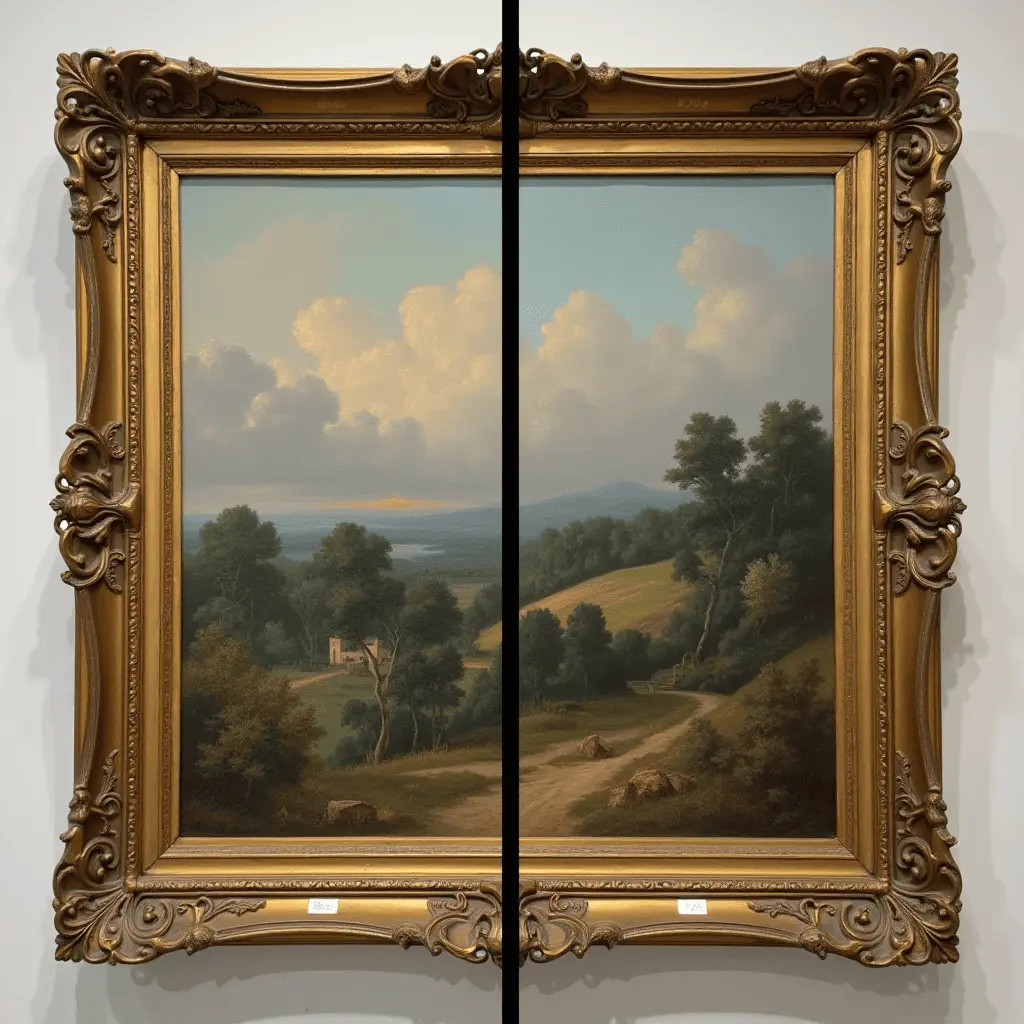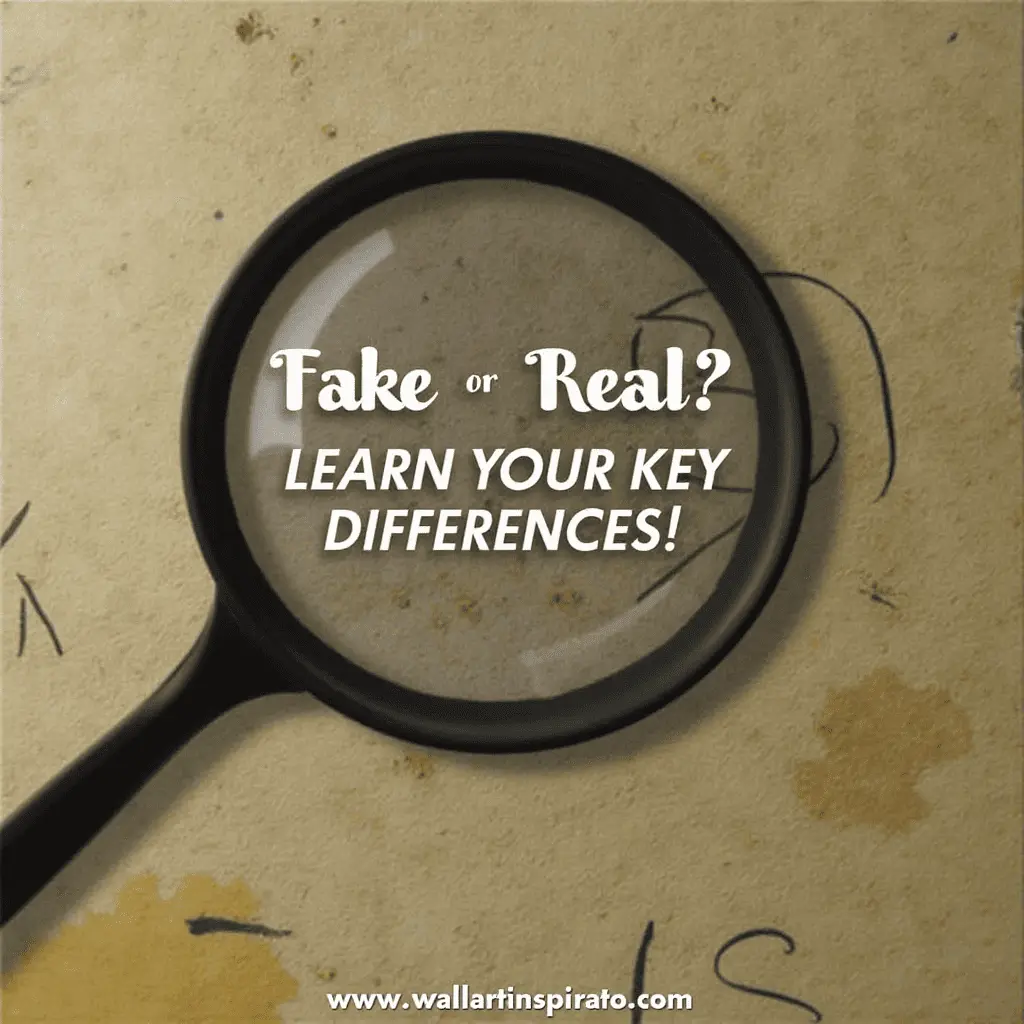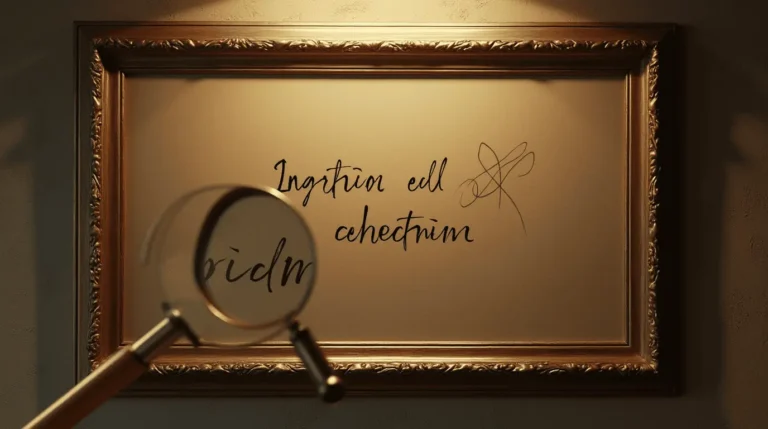Have you ever felt that rush of excitement when you stumble upon a piece of vintage wall art that seems to whisper secrets of bygone eras? You know the feeling—your heart races with the possibility of owning a unique treasure that carries history in every brushstroke. Yet, with that thrill often comes a nagging doubt: Is it genuine, or have you just been deceived by a skillfully crafted forgery? In this article, you’ll discover how to spot fake vintage wall art with seven essential tips that help you safeguard your passion and your investment.
Table of Contents
Introduction
What Is Vintage Wall Art?
Vintage wall art isn’t just any décor; it’s a slice of history. These pieces, often imbued with unique textures, time-worn signatures, and authentic patinas, have stories to tell. When you choose vintage art, you’re inviting a piece of the past into your living space—each brushstroke carries the weight of an era. Understanding the authentic characteristics of vintage wall art is the first step toward spotting a forgery.
Why Spotting Fakes Matters
Imagine the disappointment of proudly displaying what you believed to be a genuine masterpiece, only to learn later that it’s a fake. The impact isn’t just financial; it’s personal. You invest your hard-earned money and emotion into these pieces, and a counterfeit can feel like a betrayal of your passion. By learning how to identify red flags, you protect not only your wallet but also the integrity of your art collection.
Understanding the Basics of Art Authenticity
Key Terminology and Concepts
Before diving into the specific tips, it’s essential that you familiarize yourself with a few key terms:
- Provenance: This is the documented history of a piece. It’s like the biography of the artwork, detailing its origin, previous ownership, and exhibition history.
- Signature Analysis: Authentic signatures often exhibit natural irregularities—variations in pressure and flow that are hard to replicate.
- Material Aging: Genuine vintage pieces show signs of age such as patina, discoloration, or slight wear that align with the era in which they were created.
Understanding these terms gives you the vocabulary to discuss and research artworks confidently.
Common Myths About Vintage Art
There are many misconceptions out there. Let’s clear up a couple of myths:
- Myth: “All vintage art is valuable.”
Fact: While many vintage pieces are treasured, not every old piece holds high monetary or sentimental value. - Myth: “Fakes are easy to spot.”
Fact: Forgers have become sophisticated. What might seem like a small detail can be a meticulously planned forgery.
7 Essential Tips for Spotting Fake Vintage Wall Art

Now that you’re equipped with basic knowledge, let’s explore seven crucial tips that will empower you to identify authentic vintage art from counterfeits.
Tip 1 – Examine the Signature and Artist Markings
When you’re eyeing a vintage piece, one of the first things to check is the artist’s signature.
- What to Look For:
- Natural Variation: Genuine signatures are rarely perfect. They display natural fluctuations in pressure, line thickness, and even occasional smudges.
- Placement Consistency: Compare the signature with known authentic examples. Does it match in style and placement?
- Red Flags:
- Uniformity: A signature that appears overly uniform or mechanically perfect might be produced by a machine or an autopen.
- Irregular Markings: Signs that the signature was stamped or printed can indicate a fake.
Tip 2 – Assess the Age and Quality of Materials
The materials used in vintage art can tell you a lot about its authenticity.
- Material Checks:
- Canvas or Paper: Older canvases usually have a distinctive texture and may show signs of aging like slight discoloration or wear.
- Pigments: Check for pigment consistency; authentic art tends to have hues that fade or alter naturally over time.
- Frame Construction: An authentic vintage frame often uses period-appropriate techniques such as nailed canvas or specific types of wood joinery.
- What to Do:
- Hold the piece up to the light. Look for signs of natural aging that are consistent with the time period.
- Compare it with authenticated pieces from similar eras.
Tip 3 – Verify the Provenance and Documentation
For you, the piece’s history is as important as its visual appeal.
- Provenance Checklist:
- Receipts and Certificates: Authentic art typically comes with detailed documentation.
- Exhibition Records: Check if the piece has been featured in reputable galleries or exhibitions.
- Historical Context: Research the artist’s background and the art’s period to see if everything aligns.
- Quick Tips:
- Ask for any written history or certificates of authenticity.
- Use online databases and art registry sites to cross-reference the piece’s documented history.
Tip 4 – Inspect the Craftsmanship and Finishing Details
Authentic art carries the subtle fingerprints of its creator.
- What to Inspect:
- Brushstrokes and Texture: Look for natural imperfections. Hand-painted works have slight inconsistencies that add character.
- Layering of Colors: Authentic vintage art often features complex layering that shows the evolution of the artist’s technique over time.
- Finishing Details: Look closely at the edges, the frame, and the overall presentation.
- Signs of a Forgery:
- Overly “perfect” execution can be a red flag.
- Uniformity in brushstrokes that seems too mechanical.
Tip 5 – Evaluate the Condition of the Frame and Mounting
The frame can be as telling as the artwork itself.
- Key Indicators:
- Era-Consistent Framing: Authentic vintage art usually has frames that match the era’s style.
- Wear and Aging: While genuine pieces show natural wear, a piece that appears too new or artificially distressed might be suspect.
- Construction Quality: Examine how the art is mounted; original works often have frames that exhibit proper joinery and authentic hardware.
- Your Checklist:
- Compare the frame with known period examples.
- Note any inconsistencies in materials or construction methods.
Tip 6 – Compare With Verified Originals
Doing your homework is invaluable. You don’t have to be an art historian to spot discrepancies.
- Comparison Techniques:
- Online Searches: Use image searches to find verified examples of the artist’s work.
- Visit Galleries: Take a trip to reputable galleries and museums where you can compare similar works side by side.
- Reference Books and Catalogues: Look at published guides and catalogues of the artist’s work.
- Actionable Steps:
- Use reverse image search tools to see if your piece appears on trusted art websites.
- If possible, compare the piece in person with an authenticated version.
Tip 7 – Consult Experts and Leverage Modern Technology
Sometimes, the most effective approach is to bring in the professionals.
- Modern Tools:
- XRF Spectroscopy: This technology can analyze the chemical composition of pigments to verify if they match the expected profile for the period.
- Dendrochronology: For wooden panels or frames, this method can determine the age of the wood.
- Expert Advice:
- Consult art appraisers or authentication experts who have a proven track record.
- Consider hiring a professional if you’re planning a significant investment.
- Your Next Steps:
- Create a list of trusted art experts in your area.
- Use technology-assisted methods to further validate the artwork’s authenticity.
Practical Tools and Techniques

Step-by-Step Checklist for Authenticity
To help you remember all the crucial points, here’s a quick checklist you can use whenever you’re evaluating a piece of vintage wall art:
- Inspect the Signature: Look for natural variations and authentic style.
- Check Material Quality: Evaluate the canvas, pigments, and frame.
- Review Provenance: Verify the documented history.
- Evaluate Craftsmanship: Look for unique brushstrokes and finishing details.
- Assess the Frame: Ensure it’s consistent with the era.
- Compare With Originals: Use online and in-person references.
- Consult Experts: Don’t hesitate to bring in professional help or modern technology.
Comparison Table: Authentic vs. Fake Vintage Wall Art
Below is a table summarizing the key differences between genuine vintage art and potential fakes:
| Indicator | Authentic Vintage Art | Fake Vintage Art |
|---|---|---|
| Signature | Hand-signed, with natural pressure variations | Uniform, overly consistent, often machine-made |
| Materials | Aged canvas, period-appropriate pigments | Modern materials with flawless, artificial finish |
| Provenance | Detailed and verifiable history with documentation | Vague, missing, or inconsistent history |
| Craftsmanship | Unique, natural imperfections in brushstrokes | Overly polished, mechanically executed brushstrokes |
| Frame | Consistent with the era, showing natural aging signs | New, mismatched, or artificially distressed frame |
Recommended Resources and Tools
For further validation and research, consider these resources:
- Art Databases: Websites like Artnet, MutualArt, and Artsy offer comprehensive catalogs.
- Authentication Services: Professional appraisal services can provide detailed analysis.
- Online Forums: Engage with communities on platforms such as Reddit’s r/Art or specialized art collector forums.
Personal Stories and Expert Insights
Real-Life Experiences
You might have heard stories of collectors who almost fell victim to art fraud. One seasoned collector recounted how a “too good to be true” vintage piece turned out to be a well-crafted forgery, discovered only after multiple expert consultations. Their story highlights how careful scrutiny and due diligence saved them from a costly mistake. Such experiences underscore the importance of following these essential tips.
Expert Quotes and Data
Experts in the art world emphasize that authenticity is often a matter of subtle details. For instance, an art appraiser once noted:
“Authenticity isn’t just about what you see—it’s about understanding the history behind every brushstroke.”
These insights, backed by industry data and studies, reaffirm that blending traditional methods with modern technology offers the best chance to identify genuine works.
FAQ: How to Spot Fake Vintage Wall Art
Here are some frequently asked questions that can help you further understand the intricacies of art authenticity:
How can you tell if art is real or fake?
You can often tell by examining details like the artist’s signature, material quality, and documented history. Real art typically shows natural imperfections and verifiable provenance.
How can you tell if a painting is vintage?
Vintage paintings usually have aging signs—such as patina, natural wear on the canvas and frame, and period-appropriate materials—that set them apart from modern reproductions.
How will you differentiate real art from fake art?
Differentiate real art from fakes by comparing the signature and craftsmanship, checking for authentic documentation, and using reliable reference images and expert advice.
What is the surest way to uncover fake art?
The surest way is to verify its provenance and employ a mix of traditional scrutiny and modern technology—such as XRF spectroscopy—to analyze materials and confirm authenticity.
Conclusion
Recap and Key Takeaways
In your journey to build an authentic art collection, it’s crucial to arm yourself with knowledge and vigilance. Here’s what you should remember:
- Inspect the Signature: Look for natural variations that indicate a genuine, hand-signed work.
- Assess Materials: Check for authentic aging in canvas, pigments, and frames.
- Verify Provenance: A clear, documented history can make all the difference.
- Examine Craftsmanship: Authentic art carries the unique mark of its creator.
- Compare With Originals: Use online and in-person references to validate details.
- Consult Experts: Don’t hesitate to use professional help or modern technology.
Call to Action
Now that you’re equipped with these seven essential tips, it’s time to put your knowledge to the test. Next time you’re browsing through galleries, auctions, or online marketplaces, remember these steps. Share your experiences, ask questions, and engage with experts in the art community. Your passion for vintage art deserves the authenticity that only genuine masterpieces can offer.
Take action today—join art forums, subscribe to trusted art newsletters, and always trust your instincts. If you found this guide helpful, share it with fellow art enthusiasts who value the beauty of authentic vintage wall art.
By following this comprehensive guide, you empower yourself to not only spot fake vintage wall art but also to build a collection that truly reflects history and authenticity. Happy collecting!

